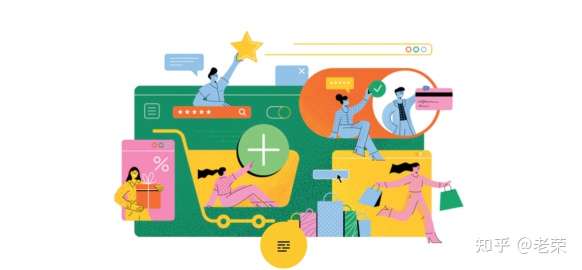The New Normal for 2022
Mobile now. The world is on smartphones. Thus mobile shopping continues to grow. In less developed countries, it’s nearly 100%. Consumers’ skepticism about mobile payments is slowly fading with the rise of faster and more secure methods.
“Mobile-first” considers everything from native smartphone-friendly user interfaces to streamlined checkouts — not scaled-down desktop experiences. By 2022, develop for mobile devices first and then scale up. It creates a more seamless experience across all device types.

Consumers are no longer mobile-shopping skeptics. “Mobile-first” considers everything from native smartphone-friendly user interfaces to streamlined checkouts.
Personalization throughout. Addressing a customer by the first name in marketing emails was once enough. Today, consumers expect both relevant product recommendations and reminders to purchase. By delivering dynamic content — tailored to the shopper — stores can close more sales and increase average order values.
Many platforms offer APIs, allowing businesses access to information that triggers specific actions or injects certain content into messages. A shopper’s geolocation, purchase history, marital status, career changes — all could prompt a personalized offer.
There is a caveat to personalization, however. Some platforms track consumers across the web. This may violate your store’s terms of service or privacy policy and could otherwise alienate shoppers.
Surveys are an affordable, non-intrusive way to customize products and messaging. Pop culture retailer Hot Topic once ran an email campaign that asked recipients which Harry Potter house they preferred. Subsequent messages focused on the recipient’s preference.
Behavioral triggers are a must. Relying on a shopper’s actions to determine what happens next is an excellent way to feed relevant products. While the initial setup takes some time, automated triggers learn more about customers individually and build up an arsenal of probabilities.
Populate recommendations based on each shopper’s session behavior. For example, say a shopper navigates to a category’s clearance area after scrolling through its full-price section because she did not initially find what she was looking for. If she returns to the full-priced section after browsing the clearance area, display mid-priced items, five-star ratings first. She will likely purchase those. An IF > THEN statement could provide the automation.

Just-for-you discount codes. Generating unique coupon codes for each customer is an excellent way to personalize the experience and analyze the success of campaigns. The codes can be pre-assigned or created on the fly based on an action, such as a click in an email or text.
Tying codes to each person can identify who’s engaging and facilitate personalized reminders to the others. And since no two codes are alike, you can worry less about expiration dates and unauthorized access.
Human-like chatbots. Artificial intelligence can be scary, but so is losing sales because customers can’t get answers quickly. Use today’s advanced chatbots to guide shoppers to relevant products, assist with payment issues at checkout, and provide compatibility info. They can also collect vital feedback and inform consumers about upcoming promotions.
AI-driven bots can address routine queries. Non-standard issues require a live agent. If you can’t offer 24/7 real-time support, respond to consumers first thing, every day.
Wrapping up
We at ShopShipShake have been working with businesses like yours with fulfilling experiences. We offer one-stop services, including an efficient supply chain, over 10 thousand of China’s suppliers, and more.
With a successful track record of over 20,000 clients, we are sure to deliver your orders requirements. Let’s get in touch to build, sustain, and grow your businesses.
If you would like to know more details about us, please contact with us:



